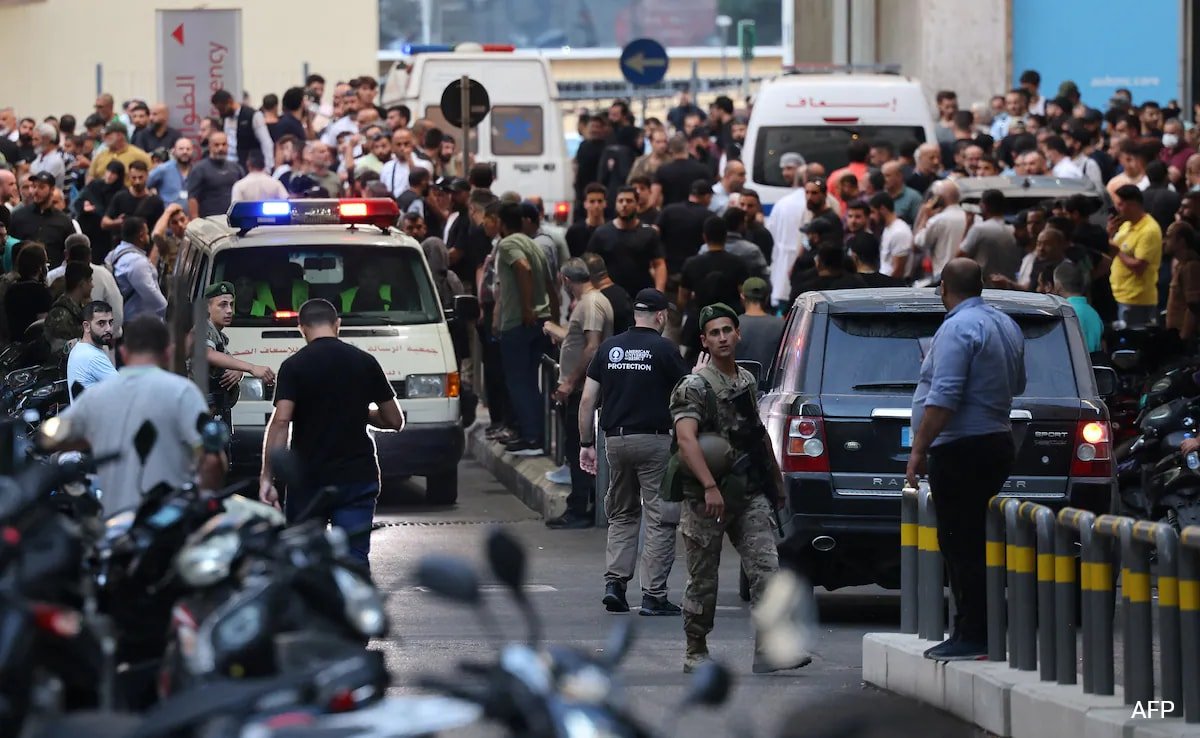One could easily dismiss it as a spy film plot if it weren’t so real: a highly sophisticated ‘pager attack’ purportedly by Israeli agencies has left dozens dead and opened a new front in the ongoing Gaza crisis. Nine people were reported killed and over 2,700, including civilians, were injured when a series of text pagers supposedly used by Hezbollah members exploded in various parts of the country. Iran’s ambassador to Lebanon, Mojtaba Amani, was also injured in the explosions.
Reports suggest Israel had intercepted the group’s supply chains and laced more than 5,000 of these devices with explosives. A Taiwanese company, Gold Apollo, has denied charges that it was the provider of the consignment. Earlier, in February, Hezbollah chief Hassan Nasrallah had warned his group against the use of mobile phones.
More Complexity To Deal With
Israel has not officially taken credit for the attack. However, the incident adds one more layer to an intricate and clandestine face-off between Israeli agencies and the Lebanese militia group as both try to avoid a full-scale confrontation.
The intent behind such an audacious attack appears to be to inflict a psychological and strategic blow rather than a tactical one. The attack would be added to a not-too-long but notable list of Israeli operations in the recent past that have primarily been designed to highlight the state’s intrusions within its enemy’s infrastructure, whether political, military, or technological. Examples include the use of automated AI-assisted weapons to assassinate Iranian scientist Mohsen Fakhrizadeh on the outskirts of Tehran in 2021, the elimination of Hamas chief Ismail Haniyeh in central Tehran a few months ago, and various other clandestine operations aimed at disrupting Iran’s nuclear programme. The basic idea behind these operations, including ones now involving low-grade tech like pagers, is optics, to show that the Israeli state can target its detractors at the time and place of its choosing.
The cat-and-mouse game between Hezbollah and Israel has been on the brink of turning into a full conflict for months now. Recently, Israel flew fighter jets over Beirut just before a sermon by Nasrallah, to show force and awareness. It has also been on a mission to eliminate his immediate deputies, such as Fuad Shukr. Recent reports have once again suggested that Prime Minister Benjamin Netanyahu may look to remove Defense Minister Yoav Gallant, who has criticised the way decisions have been taken on the war in Gaza. Despite the political fault lines within Israel on these issues – including the far too public discrepancies between civil and military leaderships – there is a consensus to target both Hamas and Hezbollah in order to secure long-term security narratives, which were deemed lost after the October 7 terror attack.
Will Iran Intervene?
As a critical part of the ‘Axis of Resistance’, Hezbollah, backed by Iran, remains strong compared to Hamas, which has seen its fighting strength deplete significantly in recent months. Also, in choosing not to join Hamas in the aftermath of the October 2023 attack in Israel, Hezbollah managed to buy some time. The reason for this approach could be attributed to two lines of thinking. First, direct aggression against Israel in the country’s north would in all likelihood not only invite a response of Israeli air power but that of the US as well, causing mass casualties on the ground in Lebanon, for which Hezbollah would have to be answerable. Second, there seems to be a lack of clarity on whether Iran would directly intervene in support of the said axis. For instance, Tehran hasn’t yet directly responded to the killing of Haniyeh.
Hezbollah thus seemingly prefers a more protracted response, causing nuisance and displacement in Israel’s north instead of going for a traditional, full-scale border conflict that it very well will not be able to afford.
Simultaneously, the growing tensions between Israel and Hezbollah are threatening to jeopardise diplomatic tracks being promoted by the likes of the US to put a ceasefire in place. Israeli hostages remain under Hamas captivity in Gaza, and Israeli military operations in response are set to continue. Netanyahu has made no qualms in admitting that such warfare will prevail till Hamas is eliminated.
A Psychological Strike
Ultimately, both Hamas and Netanyahu have, in their own way, obstructed ceasefire efforts. A political settlement today will require a prolonged secession of hostilities. While Nasrallah claims that his group does not want total war, both sides are sliding towards tactical exchanges. But even these tactical attacks can very well lead to a broader conflict.
With the latest explosions, Hezbollah’s ‘low-tech’ pager communication network has already been busted, making it harder for the group to operate, debate, and deploy forces. In the short term, if not tactically, Israel has been managing to secure at least psychological victories against Hezbollah and its ilk. In the long term, things remain as uncertain as before. It won’t be surprising if the Gaza crisis and accompanying regional tensions spill well into 2025.
[Kabir Taneja is a Fellow with the Strategic Studies Programme at the Observer Research Foundation. He is the author of ‘The ISIS Peril: The World’s Most Feared Terror Group and its Shadow on South Asia’ (Penguin Viking, 2019)]
Disclaimer: These are the personal opinions of the author













Leave a Reply